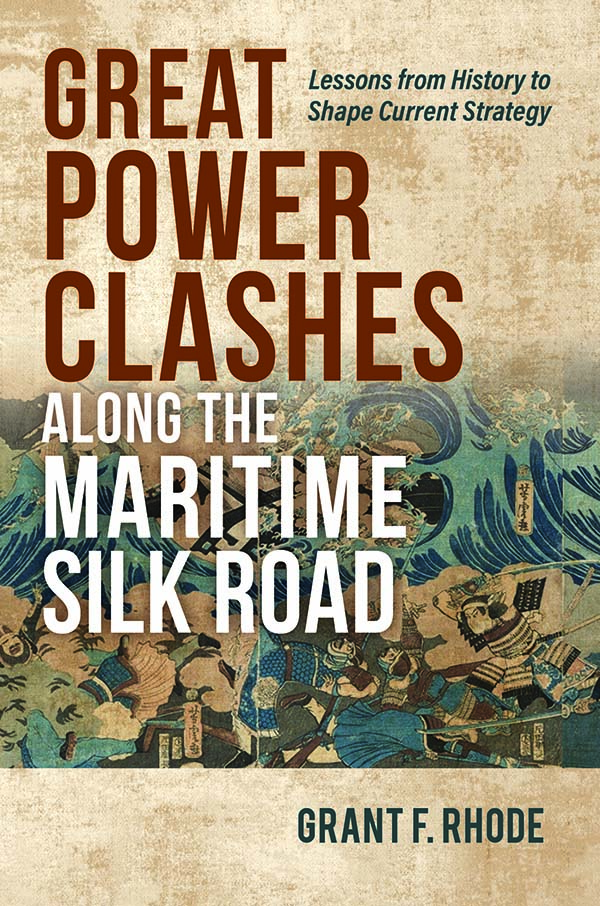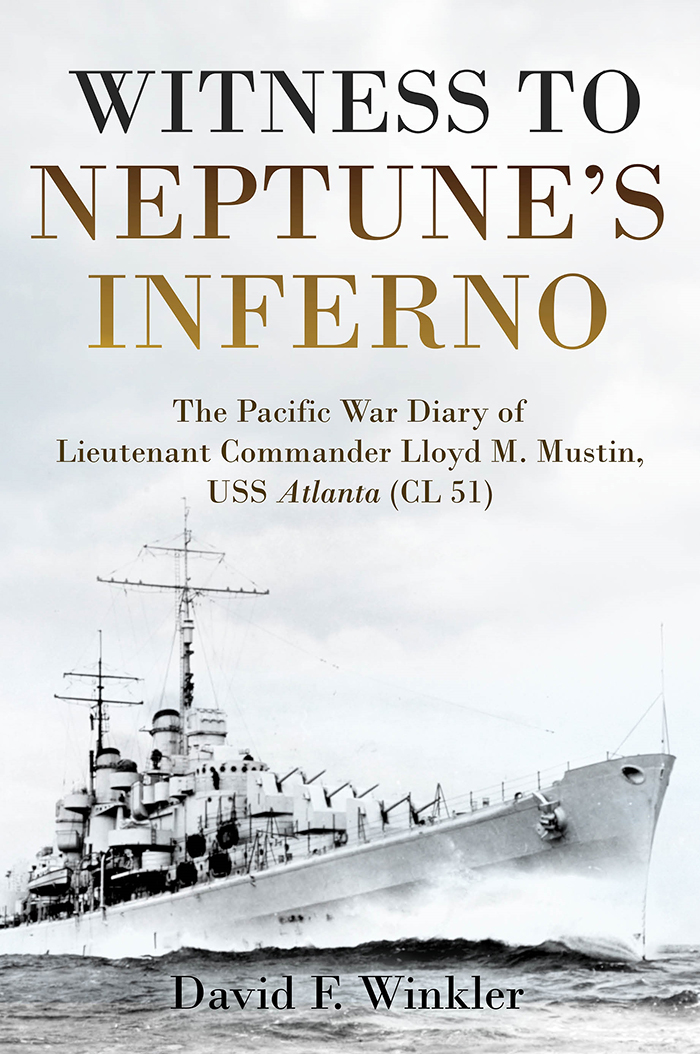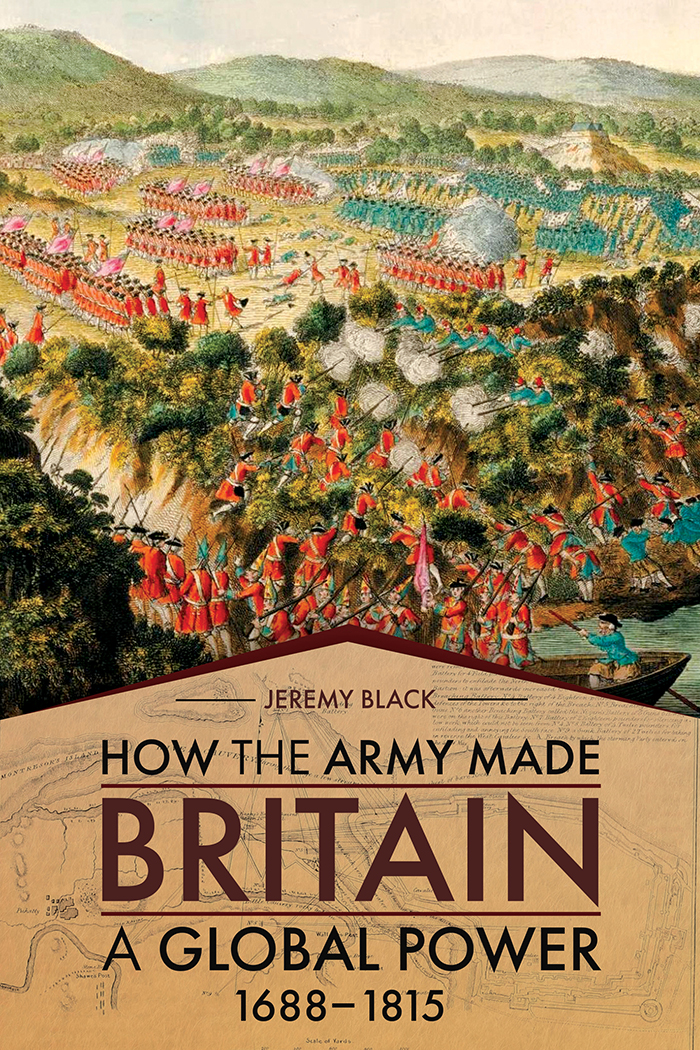Defense Studies
Deterrence in the 21st Century: Statecraft in the Information Age
edited by Eric Ouellet, Madeleine D’Agata, and Keith Stewart
Reviewed by Lieutenant Colonel Timothy L. Thomas (US Army, retired), analyst and Parameters editorial board member
©2024 Timothy L. Thomas

Editors Eric Ouellet, Madeleine D’Agata, and Keith Stewart’s Deterrence in the 21st Century: Statecraft in the Information Age is a well-documented and thought-provoking compilation of Canadian perspectives on the interaction of modern-day deterrence postures affected by disinformation threats. The work defines deterrence as making an opponent believe costs will exceed the benefits of an action and defines disinformation as the distribution of fake, misleading, fabricated, or manipulated information. The book defines numerous types of deterrence beyond the classical are defined, such as deterrence by denial, delegitimization, increasing costs, entanglement, and disinformation; and integrated, cumulative, cyber, terrorist, hybrid, comprehensive, cross-domain, tailored, and extended deterrence. Our networked environment has promulgated this spread of deterrence options. Thus, the book offers many new concepts for senior defense community experts to consider regarding deterrence and disinformation and an expansive bibliography.
The book’s four sections focus on:
- deterrence concepts;
- Chinese, Israeli, and Russian uses of information capabilities;
- Canada’s specific context for understanding deterrence and disinformation; and
- other tools of influence.
Early in the book, nuclear crisis management is discussed—more specifically, how disinformation can affect command, control, and communication systems. This damage can occur through the systems becoming degraded, disrupted, denied, destroyed, or deceived. In an age of hypersonic responses, time-compressed decisions will be required to handle disinformation. A nation’s prior experiences and knowledge may help leaders and practitioners decide how to respond absent other information, and this response may prove dangerous. Such events appear to require expanded mandatory deterrence discussions with other nuclear and cyber-strong nations.
One author quotes Robert Jervis, writing, “beliefs about what the other side is about to do depend in large part on an estimate of the other’s beliefs about what the first side will do” (47). Here, fear manifests when costs to dissuade an opponent are unknown, which can result in unreasonable deterrence conclusions. For example, the West has not dissuaded Vladimir Putin’s firm belief that NATO is exploring Ukraine as a future theater of military action against Russia. Putin’s belief could lead to a mistaken preemptive Russian response if the West crosses an unknown Russian redline. Putin’s parroting of such beliefs to his own people and to Chinese, Iranian, and North Korean leaders furthers the latter’s fears. The West may not know how to dissuade them either.
The book then discusses the information warfare capabilities of China, Russia, and Hamas. These excellent commentaries discuss topics such as the ambiguity of cyberattacks and difficulties in deciding whom precisely to deter, since such attacks often use manipulated data and disinformation. The Hamas chapter notes how Israel often threatened Gaza with kinetic deterrence, telling Hamas to “think twice” before messing with Israel (145). From 2017 to 2019, however, Hamas sent more than 2,600 rockets into Israel and continued to threaten it with tunnel warfare (145). The authors conclude that deterrence did not work as expected, noting that Hamas appears to have deterred Israel from attacking it (145). The book’s postface states that the Hamas case study analysis was written before the October 7 attack. It notes, "Israel was deceived by its adversary and indeed self-deterred in taking decisive actions against Hamas prior to 7 October 2023" (351).
The section on Canada’s context indicates that the nation’s analysis of deterrence and disinformation needs to be updated and rethought (187ff). The growing impact of cyber and other information domains on Canada’s strategic posture and information policies necessitates this reevaluation.
Finally, the book covers the difficulty in deterring terrorists or other groups. The Internet has expanded the potential battlefield for ideas and actions, where national security now requires responses to how others can use influence operations. For example, deterrence in democratic and information-based nations requires counternarratives to confront identicide, “the deleterious effects on people from the manipulation of narratives of identity and the destruction of places and histories” (238), and digital tribalism, “the formation of groups in the digital realm centered around commonalities” (for example, ethnic affiliation or political activism, among others) (240). Learning to deter the negative effects of such discussion-to-action concepts that can lead to online radicalization and violent extremist recruitment can be crucial to democratic institutions where such discussions are allowed.
The conclusion asks whether a deterrence-based posture is adequate to maintain a nation’s security, given the challenges and threats information-based societies now face. The numerous deterrence types listed above indicate that classical deterrence alone is inadequate to dissuade an opponent’s attacks in today’s situational and technical context. Continuous dialogue about other deterrence types seems mandatory since some countries view information threats as existential, almost guaranteeing trigger-ready responses (perhaps absent reliable information). The potential for misunderstanding thus grows each year. Exposing nations’ various redlines is imperative, but so is uncovering new information methods, especially as artificial intelligence continues to spread its data-collection wings.
University of Calgary Press, 2024 ▪ 392 pages ▪ $41.19
Keywords: deterrence, China, Israel, Russia, Canada
Regional Studies
Great Power Clashes Along the Maritime Silk Road: Lessons from History to Shape Current Strategy
by Grant F. Rhode
Reviewed by Dr. Patrick C. Bratton, professor of national security and strategy studies and director of South Asian studies, US Army War College
©2024 Patrick C. Bratton

More than a decade of China’s Belt and Road Initiative has sparked a cottage industry of articles and books on the subject. Grant F. Rhode makes a valuable contribution to this literature with Great Power Clashes Along the Maritime Silk Road: Lessons from History to Shape Current Strategy.
In the past, maritime empire narratives focused on European states—in particular, the succession of Portuguese, Spanish, Dutch, French, and British empires in Asian waters—and much of our general understanding moved in a linear fashion, with the British finally establishing a truly global empire and making the Indian Ocean a “British lake.” These successful European empires that combined naval might with a robust trading capacity are contrasted with stagnant Asian land empires unable to cope with European sea power. Thankfully, Great Power Clashes Along the Maritime Silk Road does much to correct this ethnocentric view, bringing attention to many of Eurasia’s often-forgotten maritime powers and conflicts.
The text focuses on land powers developing naval capabilities and sea powers, or thalassocracies, expanding or defending against other empires. While some cases are well known in the West, like the failed Mongol invasions of Japan, many are not (58–60). Rhode treats readers to excellent examples that deserve attention: the Indian Chola empire (29ff); Ottoman attempts to contest Portuguese hegemony in the Indian Ocean (131ff); Maratha resistance to the East India Company (230ff); and the amazing story of Zheng Chenggong (also known as Koxinga) and his liberation of Taiwan (197ff).
Rhode states that the book “seeks to interpret the past with a perspective toward policy implications for the present and the future” and “asks how decision makers can use Eurasian maritime history to shape informed policy toward national strategy” (2). The detailed case studies are meant to provide a background for contemporary policymakers to understand the context in which competition and conflict occur.
Rhode uses two framing devices: “Explanations for Great Power Clashes Along the Premodern Maritime Silk Road” (6) and “Maritime Strategic and Tactical Lessons.” The first is a selection of contrasting big ideas or paradigms about great-power competition from figures in geopolitics (like Alfred Thayer Mahan and Nicholas Spykman) to international law (Hugo Grotius) and liberal interdependence (Sir Norman Angell). The second is an analytical framework Rhode uses throughout the cases to determine the factors that led to each state’s successes or failures. The factors include: knowledge of the natural environment (“natural phenomena”), “military technology,” “continental vs. maritime identities,” “national identities,” and “military leadership,” among others.
While this framework helps keep the cases comparable, these factors and their analysis are debatable. For example, whether one can talk about a deeply held national identity in premodern contexts is questionable. Moreover, many of these factors remain vague and hard to measure or examine in a short paragraph. Regardless, in the conclusion, Rhode uses the two framing devices across cases in various regions, such as the China Sea and Indian Ocean, among others (262ff). This method helps him elucidate important insights.
The chapters are good, short summaries of the actors and conflicts in question. While Rhode generally makes good use of existing literature on the subjects, almost all his work comes from secondary sources. This useful primer on the subject and a valuable quick reference is relevant to the defense community as an accessible introduction and overview of geography and actors that will become increasingly important. Its greatest value is in educating audiences about other important cases that demonstrate enduring lessons of strategic geography and how states that ignore the interdependence of economic, political, and military power do so at their own peril.
Naval Institute Press, 2023 ▪ 360 pages ▪ $44.95
Keywords: great-power competition, thalassocracy, Indian Ocean, China Sea, Eurasia
Judgment at Tokyo: World War II on Trial and the Making of Modern Asia
by Gary J. Bass
Reviewed by Lieutant Colonel Peter M. Erickson (US Army), PhD, deputy G35, US Army Europe and Africa
©2024 Peter M. Erickson

Gary J. Bass, in Judgment at Tokyo: World War II on Trial and the Making of Modern Asia, masterfully recounts the Tokyo trials, or the International Military Tribunal for the Far East. From May 3, 1946, to November 12, 1948, the Tokyo trials put 26 former Japanese military and civilian leaders on the stand for war crimes committed leading up to and during World War II. Bass argues that unlike the Nürnberg trials, the Tokyo trials were a relative failure—a fact that helps explain the difference in the degree of postwar guilt expressed by Germany and Japan today.
Bass attributes the Tokyo trials’ failure to:
- the court’s failure to establish legitimacy;
- the legacy of empire; and
- the decision not to prosecute Emperor Hirohito.
The court failed to establish legitimacy largely because many of the judges were not, and could not be, truly impartial—a necessary characteristic for the defendants to receive fair hearings. Moreover, the obvious and troubling legacy of empire hung over the trial. Bass argues that many of the judges represented Western states with long expansionist and colonial histories, such as Great Britain and France, yet these judges were hypocritically predisposed to interpret Japan’s actions as acts of aggressive war, rather than as defensive acts taken to protect Japan’s vital interests. Finally, Bass argues, the choice not to prosecute Hirohito was difficult to defend, as evidence presented throughout the trial strongly implicated the emperor, while some arguably less guilty men were sent to the gallows (296).
A fine author, Bass weaves these factors throughout the book with the lives of the judges and the prosecutors who oversaw the trials. Readers will encounter these historical figures’ personalities and temperaments and appreciate how their backgrounds affected their judicial reasoning. For example, Australian Chief Justice William Webb attempted to wrangle and lead the other judges throughout the ordeal but failed utterly. Chinese Judge Mei Ruao, a Nationalist who later joined the Communist Party following the fall of Chiang Kai-shek’s Nationalist government, was concerned with the suffering the Chinese people endured. One of the most significant figures in the book is Indian jurist Radhabinod Pal, who dissented with the entire verdict, including the charge that the Japanese defendants had committed crimes against peace. In rejecting this part of the verdict, Bass notes that Pal saw Japan’s actions—including the invasion of Manchuria in 1931, its extension into Indochina in 1940, and the Pearl Harbor attack in 1941—as acts of self-defense.
The beautiful writing and more than 150 pages of notes reveal the author’s clear training as a journalist and a scholar. The book is a must-read for defense community leaders who often wrestle with the strict legality of America’s tactical actions and the broader and deeper moral impacts of its strategic endeavors.
The pursuit of justice is particularly important when momentous ramifications are at stake. After a war, the vital process of assigning blame and holding others accountable is naturally difficult. Indeed, judges must not seek blind vengeance but must consider what wrongs have occurred and how to respond. Bass’s book serves as an important and sobering reminder that there is some truth in the old expression, “to the victor go the spoils.” After a war, some of these “spoils” are the power and ability to render judgments and to shape historical narratives that involve moral right and wrong.
Alfred A. Knopf, 2023 ▪ 912 ▪ $46.00
Keywords: World War II, Pacific, Tokyo trials, justice, war crimes
British Grand Strategy in the Age of American Hegemony
by William D. James
Reviewed by Dr. Frank L. Jones, distinguished fellow, US Army War College
©2024 Frank L. Jones

William James’s debut book is an insightful study of British grand strategy that combines an analysis of statecraft with historical study from World War II to the 2003 Iraq War. James defines grand strategy as “the highest level of national security decision-making, encompassing judgements over a state’s overarching objectives and interests, as well as its security environment and resource base” (1). This definition acknowledges the importance of the processes for formulating and implementing grand strategy but also underscores the criticality of leadership’s decision-making capacities based on the facts available and assumptions made. In taking this tack, James dispels current British elites’ notions that the United Kingdom “does not do grand strategy” and counters the misconceptions that underpin that faulty belief (1). In countering this fallacy, he makes three pertinent arguments. First, British political and military leaders have “thought and acted in grand strategic terms in the era of American hegemony” (5). At issue is whether they have done so competently—that is, whether they were successful. The second and third arguments respond to two major misconceptions: that the British lost strategic agency to the United States and became a mere “vassal” and that UK domestic politics had little impact on the formulation and revision of the nation’s foreign policy and, hence, its grand strategy (3).
James presents his evidence through three case studies, with impressive use of primary and secondary sources. In the “second front” decision in World War II—that is, the cross-Channel invasion (42)—James soundly illustrates how British leaders had to forge a grand strategy once their forces retreated from the continent and, from 1941 to late 1943, resist US entreaties to open this second front pending Allied capabilities to execute this operation. Until then, British leaders developed a suitable strategy given the strategic environment and the military means available. The case also provides insights regarding the criticality of diplomacy to building the UK-US alliance and augmenting Britain’s economic capability under the stresses of war. Most importantly, Prime Minister Winston Churchill’s strategic judgment and prudent leadership were critical in achieving what James considers the outcome of successful grand strategy: “a sustainable balancing of means and ends, based on a prudent calculation of the state’s interests and the threats to those interests” (35).
In the “East of Suez” case, James provides a concise survey of British foreign policy from the early 1950s into the 1960s, discussing the foreign policy debate over successive UK governments as the strategic environment changed resulting in the ultimate decision of Britain withdrawing from major bases in the Middle East and Southeast Asia that had become “strategically vulnerable” and costly to maintain. The handling of the drawdown was often ham-fisted, but it is a vivid example of strategic adjustment where timing, domestic politics, other foreign policy priorities, economic power, and the concerns of allies shape decision making.
With respect to the more recent Iraq case, the subject warrants attention because constructive insights are derivable, and James’s study makes an important contribution. However tentative and exploratory it may be, it advances our understanding of the decisions the British and American governments made. It also explores how the UK decision to join the US-led war operated as the centerpiece of Prime Minister Tony Blair’s larger foreign policy objective of democratizing the region, a vision shared with President George W. Bush. In addition, it explains how the decision-making process overly concerned itself with two other issues at the expense of objective analyses of the ends-means calculation, namely, a desire for recognition as a major power with sway over US foreign policy and military planning and the impact of domestic politics, especially the Parliamentary Labour Party’s support for the enterprise. The side effects of the United Kingdom’s ill-conceived decision to support the United States were that it undermined its European interests and resulted in a glaring mismatch of ends and means—an apt illustration of disastrous overreach.
Regarding maps and charts, appendix 2 is a glossary of operational code names. Unfortunately, the front matter does not list it, and the text makes no reference to it. The map in appendix 3, which depicts the United Kingdom’s “East of Suez” presence in 1964, is in gray scale, which makes it difficult to read.
Nonetheless, James provides an excellent study for members of the defense community who want to understand British grand strategy historically or aspire to policy-making or strategy-making positions and need a sound introduction. Additionally, it is a sobering reminder to senior government officials of the prospects and pitfalls involved in developing and implementing grand strategy.
Oxford University Press, 2024 ▪ 272 pages ▪ $100.00
Keywords: United Kingdom, grand strategy, World War II, Iraq War, Cold War
Military History
We Had to Get Out of That Place: A Memoir of Redemption and Betrayal in Vietnam
by Steven Grzesik
Reviewed by Dr. Wylie W. Johnson, US Army War College class of 2010
©2024 Wylie W. Johnson

The Vietnam War ended nearly 50 years ago, yet it continues to generate memoirs of life experiences on the front lines. These memoirs highlight valuable lessons our military institutions tend to forget in the pursuit of war du jour. Such is the case for We Had to Get Out of That Place by Steven Grzesik, who served as a front-line combat infantryman, a rear-echelon engineer, a long-range patrol team member with the 75th Rangers, and a helicopter door gunner during two 12-month combat tours.
Grzesik relates that he was not a model soldier. He arrived in Vietnam as a draftee with a temper and a combination of personal problems, addictions, and desires. While he also showed promising abilities and urban street smarts, he was viewed as a problem soldier, repeatedly passed to other units in the time-honored Army tradition. Grzesik’s openness regarding his strengths and weaknesses makes for an interesting story with a greater breadth of experience than most war memoirs.
The isolation, abuse, and sacrifice of individual replacements are major themes throughout Grzesik’s story. New soldiers arrived at units in fresh, unfaded uniforms, making them easily identifiable. The new guys had no combat experience that might keep them alive, no friends in the unit to watch their backs, and no safe assignments. Unsurprisingly, due to death or injury, many new soldiers departed units before anyone knew their names. Commanding officers assigned new troops the worst duties, and these troops experienced constant bullying within their units until the next group of new guys arrived. It was an ugly system of hierarchical initiation, and leadership often perpetuated such practices. Grzesik describes how, at some point in this ugly chain of events, surviving replacements rebelled against their commanding officers by refusing orders, participating in violence, descending into addiction, and engaging in other passive-aggressive acts. He recalls pulling a machete on one overbearing noncommissioned officer and pointing a loaded M16 rifle at another. Grzesik’s actions resulted in his nonjudicial transfer to yet another unit in Vietnam.
The attributes that kept combatants alive in small-unit actions—aggression, violence of action, instinctual response, intuition, and self-preservation—also worked against unit cohesion in the individual replacement and 12-month tour environment. Grzesik’s primal survival strategy involved drug addiction and actions that resulted in his transfer from toxic units. In some perverse way, the Army found this strategy effective since it retained skilled warriors. It also created a generation of former soldiers with enormous personal problems who returned home to an uncomprehending American population.
The wounds of war include emotional and moral injury. Soldiers, absent physical injury, may be functioning at a substantial mental or emotional deficit inflicted in part by the Army’s institutional policies. Unit cohesiveness begins with senior leadership and is functionally enhanced or hindered through each level in the chain of command. Leaders must remember that all soldiers in war must operate at a survival level, and anything they can do to enhance that survival makes a more effective force.
Books like We Had to Get Out of That Place provide a relaxing, enjoyable read for senior leaders while reminding them about the imperative of caring for soldiers. Grzesik tells the story that the Army, regardless of the technology, the exercise of power and violence, or the use of grand strategy through small-unit tactics, is a human organization. Let us not repeat the mistakes of the past.
McFarland and Co., 2024 ▪ 215 pages ▪ $19.99
Keywords: infantry, rangers, Vietnam War, individual replacements, unit cohesion
Witness to Neptune’s Inferno: The Pacific War Diary of Lieutenant Commander Lloyd M. Mustin, USS Atlanta (CL 51)
by David F. Winkler
Reviewed by Colonel Jonathan Klug (US Army), PhD, associate dean, associate professor, and Admiral William F. Halsey Chair of Naval Studies, US Army War College
©2024 Jonathan Klug

David F. Winkler has done a great service by making the wartime diary of an important senior leader accessible to a broad audience. An homage to the late James D. Hornfischer, Witness to Neptune’s Inferno: The Pacific War Diary of Lieutenant Commander Lloyd M. Mustin, USS Atlanta (CL 51) includes the diary entries of future Vice Admiral Lloyd M. Mustin during the crucible of combat in the South Pacific during World War II. Winkler adds tremendous value to Mustin’s comments by placing them into their proper historical context and providing insight into the development of a mid-career naval officer into a strategic leader. Winkler is uniquely qualified for this endeavor as a surface warfare officer, graduate of the Naval War College, and award-winning naval historian.
Winkler’s introduction and first two chapters explore Mustin’s history before the diary, such as his youth and his family’s deep ties with the Navy. These early years included the loss of his biological father and his widowed mother marrying George D. Murray, a future admiral and Mustin’s stepdad and mentor. After graduating from the United States Naval Academy, Mustin became a surface warfare officer who later attended the Naval Postgraduate School and the Massachusetts Institute of Technology. Mustin was an expert on gunnery and was integral in developing the Navy’s first lead-computing antiaircraft gunsight. As one of the Navy’s subject matter experts on antiaircraft gunnery, the Navy displayed its ability to manage talent by assigning Mustin to the USS Atlanta, the lead ship of eight light cruisers designed to provide antiaircraft protection to naval task forces.
Chapter 3 begins with the first diary entry of December 23, 1941, with Mustin aboard the Atlanta en route from her shipyard in Kearny, New Jersey, to Brooklyn Navy Yard in New York City for commissioning. The next entry describes the ship’s commissioning and some personal notes. Winkler then adds 11 pages of narrative and analysis. Works presenting diaries or theories of military leaders are often unbalanced in terms of the subject’s words and the presenter’s commentary—Winkler gets the balance right.
The following two chapters cover the Atlanta’s fitting out, workups, and travel to Hawaii. Chapter 6 details Mustin’s impressions of Pearl Harbor upon his arrival. Importantly, Mustin began a recurring theme of highlighting naval logistics (specifically, fueling), and Winkler explores this concept further. Interestingly, in a 1973 interview, retired Vice Admiral Mustin reflected on the naval logistical situation in 1942, saying, “What struck us at this point very bitterly was that the logistics pipeline to this South Pacific area of operations was pretty crude and pretty primitive. We felt ourselves lucky to get enough fuel oil to keep going on” (Lloyd M. Mustin, interview no. 13 by John T. Mason Jr., January 31, 1973, in The Reminiscences of Vice Adm. Lloyd M. Mustin, USN (Ret.), vol. 2, 1911–1999 [Naval Institute Press, 2003], 507–8).
Subsequent chapters provide the unvarnished thoughts of a future admiral. Mustin is often scathing in his analysis of operations and leaders, and Winkler does a great job of providing perspective based on 80 years of history and his service. It is important to note that some of Lieutenant Commander Mustin’s comments are valid, as Admiral Chester W. Nimitz’s relief of theater commander Vice Admiral Robert L. Ghormley attests. Moreover, Mustin’s 1973 interview demonstrates the old salt’s perspective and candid remarks. The diary then takes readers to the sinking of the Atlanta on November 13, 1942, and to conclude, Winkler quickly takes readers through the Mustin family’s history.
The strength of Winkler’s interesting and educational presentation is its blend of a wartime diary, historical context, and professional commentary. Witness to Neptune’s Inferno is a great read for future strategic leaders for many reasons, particularly the importance of reflection. Finally, this book would be especially useful to support the exploration of the opening phases of a transpacific war, a topic that Joint professional military education should emphasize.
Casemate, 2024 ▪ 288 pages ▪ $34.95
Keywords: World War II, South Pacific, naval officer, war diary, strategy and logistics
Longstreet: The Confederate General Who Defied the South
by Elizabeth R. Varon
Reviewed by Lieutenant Colonel James “Andy” Nichols, US Army War College class of 2024
©2024 James Andrew Nichols

Nine years after the American Civil War, Louisiana state militia Major General James Longstreet—a former enslaver and Confederate corps commander—led a racially integrated militia to suppress former Confederates trying to overthrow the elected Louisiana governor in a daylong street battle in New Orleans (203–7). How the man whom US Secretary of War Edwin M. Stanton called the “number three Confederate” came to embrace Republicanism so quickly is at the crux of Elizabeth R. Varon’s excellent new biography, Longstreet: The Confederate General Who Defied the South (135).
Varon delivers an engaging, well-researched account of Longstreet’s journey through disunion, reconstruction, and reconciliation. She focuses primarily on Longstreet’s remarkable post–Civil War transformation from a senior Confederate rebel to a defender of US Republican values at home and aboard. Varon couches Longstreet’s story in late-nineteenth-century social, political, and economic changes, helping readers understand how and why Longstreet is pilloried and scapegoated by Lost Cause mythologists. Longstreet reveals an ambitious politician, author, and statesman trying to shape the South into an integrated, industrious region, all while navigating the violent, reactionary White South that sought to return to the antebellum status quo.
Although Varon discusses the disunion (incidentally, the title of her 2008 book) and Longstreet’s role as a senior Confederate field commander in the Army of Northern Virginia, she focuses two-thirds of the book on Longstreet’s post–Civil War role in reconstruction and White national reconciliation. Through the presentation of Longstreet’s copious personal correspondence with family, the press, and political leaders (including President Ulysses S. Grant), Varon provides insights into the general’s postwar mindset and shows the dramatic evolution of his thinking and actions regarding reconstruction politics. For example, by 1867,
. . . he had already begun to distance himself from his fellow Confederates and was receptive to new [Republican] ideas . . . that illustrated the power of the North’s free-labor society . . . [which led him to believe] only acceptance of defeat and of change . . . could bring the South peace and prosperity (144, 152).
Varon highlights three June 1867 letters Longstreet published in the press advocating for the Congressional Reconstruction Acts, Black suffrage, and a peaceful, prosperous reunion (144–45). Northern politicians seized on this public turning point as proof that some former Confederate leaders were willing to cooperate and rebuild, while the White, Southern Democratic press and politicians attacked Longstreet for turning on his former comrades and race (145–47). Varon’s text shines when she teases out Longstreet’s transformational moments. Throughout the book, she richly contextualizes these turning points with supporting documentation and reveals the private and public reactions of Longstreet’s supporters and detractors.
This method of presentation adds dynamism to Longstreet’s journey. Varon traces his rise and fall from a prominent Louisiana businessman and militia general to his relocation and resurrection as a Georgia Republican who secured a US postmaster position (1879–80) and a US ambassadorship to the Ottoman Empire (1880–81) and who ultimately became the US marshal of northern Georgia (1881–84). At each pivotal transition, Varon leverages primary and secondary sources to reinforce her insightful analysis of the complexities and problems facing Longstreet in his role as a US ambassador and marshal (257–59, 267–68). Additionally, accounts and memoirs from Longstreet’s lifelong battle with Lost Cause mythologists, such as Jubal A. Early and his attempts to shape the historical record, lend depth and pathos to his journey (237).
It is hard to find flaws in Varon’s well-documented and engaging narrative. Perhaps she could have provided more information about other former Confederates who sought redemption through Republican politics and served in official state and federal government roles, such as John Singleton Mosby or William Mahone (245, 292). A more detailed examination might have given readers a better understanding of the political and social tensions that former rebel officers contended with in postwar life.
Varon’s book lifts Longstreet out of the Lost Cause mythology and, through careful archival work, enables readers to understand a man who experienced personal and professional transformation and sought redemption. Varon advances the historiographical understanding of Longstreet, and her book deserves a place on academic and popular history bookshelves. Ultimately, this biography provides a more nuanced, revealing portrait of a controversial enslaver, Confederate, and US ambassador.
Simon & Schuster, 2023 ▪ 480 pages ▪ $35.00
Keywords: James Longstreet, American Civil War, Reconstruction, Republicanism, Lost Cause
How the Army Made Britain a Global Power, 1688–1815
by Jeremy Black
Reviewed by Dr. James D. Scudieri, senior research historian, Strategic Studies Institute, US Army War College

Jeremy Black’s How the Army Made Britain a Global Power, 1688–1815 articulates how British army campaigns in “the long 18th century” were as strategically significant as those by the far better publicized Royal Navy. Black argues that the British army developed a “multi-purpose character” unmatched by other armies of the time and an “inclusive Britishness.” Anti–standing army rhetoric influenced civilian-military relations but did not prevent the evolution of a military culture (vi–vii, xiii). Ten chapters plus the introduction and conclusion proceed largely in a chronological fashion.
The introduction emphasizes British army experience on a global scale, ranging from the quelling of rebellion to complex amphibious operations. Key analyses link the army to the legalities of constitutional restraints, vagaries of domestic politics, and associated funding. These aspects partly explain the army’s ineffective and inefficient bureaucracy, unlike that of the navy (xii). Black underlines agency. Individuals “under pressure” achieved success in this environment (xv).
Chapter 1 concerns domestic roles from 1688 to the suppression of the last Jacobite rebellion in 1746, such as policing and the defeat of foreign intervention in Ireland and Scotland. The officer corps was a political tool, purchasing commissions, with aristocratic connections far more important than those in the navy.
Chapter 2 deals with the French foe from 1689 to 1748 in Europe and chapter 3 overseas. Regressive time periods punctuated the Duke of Marlborough John Churchill’s campaigns in 1702–11 and the Duke of Cumberland William Augustus’s mid-century attempted reforms at home. Technological changes underline British infantry firepower. The primary arbiters of victory, however, were political guidance and military leadership. The British army’s impact was nonetheless limited in Europe and overseas.
Chapter 4 showcases the Seven Years’ War (1756–63), including the two years preceding it. Initial defeats led to major battlefield victories, such as Minden and Quebec in 1759, which led to decisive strategic effects. Black showcases the role of civilian decision making—more specifically, that of William Pitt, the Elder—and how agency and contingency outweighed tactical expertise.
Chapter 5 combines the lean postwar years (1763–74) and the American Revolution (1775–83) into a single treatment of North America. Black rebuts many stereotypes and cautions against presentism and views of an inevitable British defeat to some harbinger of future political modernity. He notes the significant element of civil war between patriots and loyalists. The former still could not triumph without French and Spanish intervention, whose armies could defeat the British.
Chapter 6 paints with a broad brush India from 1746 to 1815. The future of India as central to the imperial experience clouds how British ascendancy was far from guaranteed, facing foes like the Mughals, the Maratha confederacy, Mysore, Persia, and Afghanistan. British dominance, not yet full control, dates from 1799 to 1803 at best (119).
Chapter 7 covers the coalition warfare of the French Revolutionary and Napoleonic Wars in Europe. Chapter 8 deals with parallel British global operations, including the War of 1812 in North America. Chapter 10 showcases just Waterloo in 1815. Peacetime retrenchment after 1783 had led to numerous early war failures. Substantive civilian-military reforms complemented tactical and operational changes into an instrument that the Duke of Wellington Arthur Wellesley wielded expertly. Black also credits Wellington as Marlborough’s equal in “alliance management” (197).
Chapter 9 is a sequel to chapter 1—the “Army as a Political Force” from 1746—with an emphasis on the French Revolutionary wars of the 1790s. The army supported government initiatives against domestic radicalism and the promotion of loyalism and countered the threat of invasion, especially in Ireland, given an inadequate militia system.
The conclusion reiterates the theme that the British army made the empire as much as the Royal Navy—through projecting Landpower. Black attributes the British “tendency to underplay the achievements of the army” to “British strategic culture” (201).
The book’s major challenge is its mere 205 pages of text to treat the vast subject adequately. There is clearly primary source research, but certain secondary sources are notably missing. The publisher has done the author a disservice for a volume in the Casemate Academic series—with a price tag of $65.
Nevertheless, I would still recommend this book. Black’s strategic and operational analyses above tactical accomplishments are noteworthy, synthesizing the interactions of the elements of national power. The text also integrates numerous mini biographies, highlighting individual agency, relationships, and contingency in action. Moreover, American security professionals will see parallel insights from this small regular army within a parliamentary system. Thus, the two charts on British army command-and-control arrangements in 1730 and 1800 also reflect civilian-military relations (viii–ix). The US Army’s evolution in a republic that centers the military establishment in Congress, including wartime expansion and peacetime reductions, developed from this British basis.
Casemate, 2021 ▪ 256 pages ▪ $65.00
Keywords: British army eighteenth-century campaigns, British army Napoleonic campaigns, army and politics, civil-military relations
Disclaimer: Articles, reviews and replies, review essays, and book reviews published in Parameters are unofficial expressions of opinion. The views and opinions expressed in Parameters are those of the authors and are not necessarily those of the Department of Defense, the Department of the Army, the US Army War College, or any other agency of the US government. The appearance of external hyperlinks does not constitute endorsement by the Department of Defense of the linked websites or the information, products, or services contained therein. The Department of Defense does not exercise any editorial, security, or other control over the information you may find at these locations.

Find additional online book reviews on the US Army War College Press website at: https://press.armywarcollege.edu/parameters_bookshelf/.
Online Book Reviews
The US Army War College Press publishes reviews of books on defense studies, grand strategy, history, military history, military strategy, national security, and political science in Parameters traditionally and now in the new online feature, Parameters Bookshelf. We are currently assigning books to be featured online.
Content Requirements
Online book reviews range from 500 to 750 words and should follow The Chicago Manual of Style, 18th Edition for style and grammar. The US Army War College Press reserves the right to edit and abridge online book reviews per our in-house style guide and The Chicago Manual of Style.
Books Available for Review
To request a list of books available for online review, e-mail the Parameters book review editor at usarmy.carlisle.awc.mbx.parameters@army.mil and provide a short biography and your areas of interest. All online book reviewers receive an assignment letter specifying the submission deadline and guidelines for writing and submitting the review.